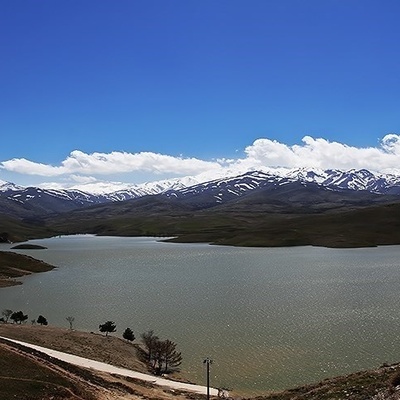SAEDNEWS: From the moment the assassinations began, my father was fully occupied with specialized medical work. The first was the attempted assassination of Mr. Hashemi Rafsanjani, after which my father and I rushed to the hospital.

According to the political desk of Saed News, the book “The Moses of the Zargars”, recounting the life and memoirs of Dr. Mousa Zargar, has been published by Soureh Mehr Publishing House, authored by Najmeh Nilipour.
This biography details the life of Dr. Mousa Zargar, former Minister of Health during the Revolutionary Council and one of Iran’s most skilled surgeons.
Born in 1935 (1314 SH) in the Hisar Tahmasb neighborhood of Safadasht, a rural district near Tehran, Zargar graduated from Marvi High School in Tehran in 1953 and earned his Doctor of General Medicine from Tehran University of Medical Sciences in 1961. In 1968, he specialized further, obtaining a super-specialty in thoracic surgery.
Over the years, he held many high-level responsibilities:
Head of the medical reception team for Imam Khomeini’s return to Iran on February 1, 1979
Member of the Central Council and head of the medical committee of the Islamic Republic Party
Personal physician to both Imam Khomeini and Ayatollah Khamenei during the 1981 assassination attempt
Minister of Health and Welfare during the Revolutionary Council
MP for Shahriar (1st term), and MP for Tehran (2nd and 5th terms)
Founder of the generic drug policy in Iran
Creator of Iran’s first trauma research center
He also worked extensively on modernizing Sina Hospital under various administrations.
Dr. Mousa Zargar passed away on March 12, 2020 (22 Esfand 1398) from a heart condition.
The book “The Moses of the Zargars” is divided into two sections:
Autobiographical recollections by Dr. Zargar himself
Descriptions of his personality and character by family, friends, and colleagues
The book also contains documents and photographs appended at the end.

“My father was in charge of organizing the first international medical seminar during the presidency of Ayatollah Khamenei. It was attended by Iranian doctors trained abroad, as well as foreign medical professionals.
Rumors circulated that returning to Iran was unsafe, but my father guaranteed everyone’s safety. He even reserved rooms for them in the Hilton Hotel, which was one of the most secure locations at that time.”
“After the revolution, once Imam Khomeini had settled in Qom, my father received a call: ‘His Holiness is unwell; please come to Qom immediately.’
We went as a full medical team. My father conducted an initial examination and diagnosed a minor heart attack.”
Zargar told Imam:
“As your physician, I strongly advise against staying in Qom. The medical infrastructure there is lacking. In Tehran, you’ll be under constant supervision and receive faster emergency care if needed.”
There was considerable political and religious opposition to moving Imam Khomeini at the time, but Zargar insisted.
Imam asked: “Can I not stay in Qom?”
Dr. Zargar replied: “Sir, if I’m the expert, I must tell you that it is religiously obligatory for you to move to Tehran now.”
Imam responded: “If that is your opinion, then it is my duty to obey.”
He was then admitted to the Heart Hospital in Tehran, and his condition was stabilized. Dr. Zargar felt enormous responsibility and anxiety due to the critical nature of treating the nation's leader.

After discharge, Imam temporarily stayed in an apartment in Tajrish. Discussions ensued about a permanent residence. Since Imam had no home in Tehran and refused to live in any government property, Seyyed Mehdi Hashemi Alia, also known as Imam Jamaran, proposed the Jamaran Hosseiniyeh, which Imam accepted.
At the time, the building was unfinished—bare brick walls, not even plastered.

Later, Imam’s condition worsened again. We rushed to Jamaran.
During examination, Imam said: “You prescribed these pills, but I felt nauseous when I took them, so I stopped.”
He lifted the blanket and revealed the untaken medication underneath.
Imam had hidden the drugs, and the family believed he was taking them regularly.
At that moment, my father exploded:
“Sir! Who gave you the right to stop your medication? Why didn’t you tell me they made you ill? I would’ve changed the prescription!”
Everyone was shocked by Zargar's tone. But Imam calmly replied:
“Let him be. He’s right. I must repent for this.”
He then said, “Bring me water so I can take my medication.”
Dr. Zargar adjusted the medication and firmly instructed Imam to always report side effects and never self-discontinue treatment again.
The year 1360 SH (1981) was filled with political assassinations. Our house was bombed twice.
In one attack, a Revolutionary Guard stationed outside our home was shot and paralyzed.
When the assassination wave began, my father was constantly involved in emergency care.
The first major attack was on Hashemi Rafsanjani, and we were at the hospital immediately.
During the June 27, 1981 (6 Tir 1360) attempted assassination of Ayatollah Khamenei, we were also among the first at the hospital.
My father provided the first medical intervention. Because a major artery in Khamenei’s arm had been damaged, without his timely action, amputation would have been likely.
Later, a team of neurosurgeons attempted nerve repair, but the surgery was not successful.

